Confused about whether to get an EcoFlow or Jackery power station? Here’s a breakdown of the key differences between the brands, including
- Capacity
- Battery type
- Lifespan
- Features
- Cost
Bottom Line Upfront
When comparing similar-capacity models, EcoFlow is the clear winner over Jackery. The main reason is that many EcoFlow power stations use the newer LFP battery technology, whereas Jackery still uses the older NMC batteries.
EcoFlow also beats Jackery regarding warranty, input/output options, and features. Because they last longer, EcoFlow power stations are cheaper in the long run.
EcoFlow vs. Jackery: Key Differences
Capacity
Both EcoFlow and Jackery make power stations with various capacities. However, EcoFlow has more options, including a model (the Delta Pro) which has a huge capacity of 3600Wh. Jackery has a few more options for small-capacity power stations, though.
The table below lists EcoFlow and Jackery models by capacity so you can see which ones are comparable.
| EcoFlow | Capacity (Wh) | Jackery | Capacity (Wh) |
|---|---|---|---|
| River Mini | 210 | E160 | 167 |
| River 2 | 256 | E240 | 240 |
| River | 288 | E300 | 293 |
| River Plus | 360 | ||
| River 2 Max | 512 | E500 | 518 |
| River Max | 576 | ||
| River Max Plus | 720 | ||
| River Pro | 720 | ||
| River 2 Pro | 768 | ||
| Delta Mini | 882 | ||
| Delta 1000 | 1008 | E1000/Pro | 1002 |
| Delta 2 | 1024 | ||
| Delta 1300 | 1260 | ||
| Delta Max 1600 | 1612 | E1500 | 1534 |
| Delta Max 2000 | 2016 | E2000 Pro | 2160 |
| Delta Pro | 3600 |
Battery Chemistry
When Jackery was founded in 2012, its battery technology was considered cutting-edge. In recent years though, Jackery is getting surpassed by the competition.
Their power stations still use NMC (Nickel Manganese Cobalt Oxide) batteries. By contrast, most newer models of EcoFlow generators use the newer LFP (Lithium Iron Phosphate) batteries.
NMC vs. LFP Batteries
LFP batteries, also called LiFePO4 batteries, were invented in 1996. Compared to NMC batteries, they have much longer life cycles. They can be emptied and recharged 3,000 times and still retain 80% of their capacity. By contrast, NMC batteries can only be recharged about 500 times and still retain 80% capacity.
Other benefits of LFP batteries over NMC are that they handle a wider range of temperatures, are more efficient, and are safer (they won’t overheat and catch fire as lithium-ion batteries can in certain situations).
Despite this, NMC batteries are sometimes preferred because they are smaller and more portable.
EcoFlow Generator Battery Type
Note that not all EcoFlow power stations use the newer LFP batteries. Below you can see a table with EcoFlow models and battery types.
| EcoFlow | Battery Type |
|---|---|
| River Mini | NCM |
| River 2 | LFP |
| River | NCM |
| River Plus | NCM |
| River 2 Max | LFP |
| River Max | NCM |
| River Max Plus | NCM |
| River Pro | NCM |
| River 2 Pro | LFP |
| Delta Mini | NCM |
| Delta 1000 | NCM |
| Delta 2 | LFP |
| Delta 1300 | NCM |
| Delta Max 1600 | NCM |
| Delta Max 2000 | NCM |
| Delta Pro | LFP |
Inverter Type
The inverter in a power station converts direct current (DC) into alternating current (AC). Power stations typically use either a pure sine wave inverter or a modified sine wave inverter.
Of the two, pure sine is much better. It is more reliable and has less interference, essential if you need to power motorized appliances or delicate equipment such as laptops or CPAP machines.
It’s also necessary if you want to use the generator while simultaneously charging it. However, pure sine wave inverters are more expensive than modified sine.
EcoFlow uses pure sine wave inverters on all of their power stations. Jackery also uses pure sine on their power stations. However, their Explorer 160 model has a modified sine wave inverter.
Warranty
When it comes to warranty, EcoFlow is much better than Jackery. Their power stations with LCF batteries have 5-year warranties. With their larger-capacity power stations, you can extend the warranty if you register it. The warranty period starts on the day you receive the power station, not the date you bought it.
By contrast, Jackery power stations only have a warranty of 2 years. You can extend the warranty for free by registering the product. This will give you an additional year. The warranty period starts on the day you buy the power station and not when you receive it.
| EcoFlow | Warranty | Jackery | Warranty |
|---|---|---|---|
| River Mini | 2 years | E160 | 2+1 years |
| River 2 | 5 years | E240 | 2+1 years |
| River | 2 years | E300 | 2+1 years |
| River Plus | 2 years | ||
| River 2 Max | 5 years | E500 | 2+1 years |
| River Max | 2 years | ||
| River Max Plus | 2 years | ||
| River Pro | 2 years | ||
| River 2 Pro | 5 years | ||
| Delta Mini | 2 years | ||
| Delta 1000 | 2 years | E1000/Pro | 2+1 years |
| Delta 2 | 5 years | ||
| Delta 1300 | 2 years | ||
| Delta Max 1600 | 2+1 years | E1500 | 2+1 years |
| Delta Max 2000 | 2+1 years | E2000 Pro | 2+1 years |
| Delta Pro | 3+2 years |
Important:
For both EcoFlow and Jackery, the warranty only applies if you do not “modify” the power station and use it as “authorized.” This means that the warranty will be void if you use the power station with other brands of solar panels or other cables, try to fix it yourself, or forget to charge it regularly!
Input Options
EcoFlow beats Jackery when it comes to input options. For starters, you get more charging options with EcoFlow (wind power is supposed to be coming soon – read about wind and solar hybrid systems.).
The maximum input on EcoFlow products is much higher than similar-capacity Jackery models. For example, the EcoFlow River 2 Max has a max solar input of 220W, whereas the Jackery E500 has a max input of only 100W.
Note that some models of EcoFlow power stations have the “X-Stream” feature, which allows you to charge them incredibly fast at EV stations.
Output Options
When it comes to output options, EcoFlow once again beats Jackery. The EcoFlow power stations have many more outlets than similar Jackery models. For example, the EcoFlow Delta 2 has 15 outlets, whereas the Jackery E1000 Pro has only 7.
Most EcoFlow models have USB-C, whereas many Jackery models do not. Further, EcoFlow outlets are much higher wattage than Jackery, so you’ll be able to charge devices faster.
Other Features
EcoFlow power stations have many more additional features compared to similar Jackery models. For example, you will find these features on most EcoFlow models:
- Digital display screen
- Wifi
- Bluetooth
- Smart app controls
Cost
When you look at the cost per Wh of capacity, the Jackery and EcoFlow models with NCM batteries are similarly priced. You get more features with the EcoFlow models, though, so these are a better deal.
EcoFlow power stations with LFP batteries are more expensive per Wh of capacity. However, they last 3000 cycles before losing capacity, compared to just 500 with Jackery products. Thus, EcoFlow LFP power stations are much cheaper than Jackery products in the long run.
Also read: Best Indoor Generator for Power Outages
EcoFlow vs. Jackery Model Comparisons
Below you can see side-by-side comparisons of similar-capacity EcoFlow and Jackery power stations.
Regarding key features like battery type, lifespan, inputs and outputs, and warranty, EcoFlow is the clear winner.
River Mini vs. Explorer 160
Note that the Jackery Explorer 160 does NOT have a pure sine inverter and can’t be used while charging.
|
Capacity:
210Wh
|
Capacity:
167Wh
|
|
Surge:
600W
|
Surge:
150W
|
|
Lifespan:
500 cycles to 80% capacity
|
Lifespan:
500 cycles to 80% capacity
|
|
Weight:
6.3lbs
|
Weight:
4lbs
|
|
Total Outlets:
6
|
Total Outlets:
5
|
|
USB-C Output:
100W
|
USB-C Output:
15W
|
|
USB-A Fast Charge:
No
|
USB-A Fast Charge:
No
|
|
AC Input:
300W
|
AC Input:
42W
|
|
Solar Input:
100W
|
Solar Input:
42W
|
|
Battery Chemistry:
NMC
|
Battery Chemistry:
NMC
|
|
Warranty:
2 years
|
Warranty:
2 years
|
River 2 vs. Explorer 240
|
Capacity:
256Wh
|
Capacity:
240Wh
|
|
Surge:
600W
|
Surge:
400W
|
|
Lifespan:
3000 cycles to 80% capacity
|
Lifespan:
500 cycles to 80% capacity
|
|
Weight:
7.7lbs
|
Weight:
6.6lbs
|
|
Total Outlets:
6
|
Total Outlets:
4
|
|
USB-C Output:
60W
|
USB-C Output:
None
|
|
USB-A Fast Charge:
No
|
USB-A Fast Charge:
No
|
|
AC Input:
360W
|
AC Input:
None
|
|
Solar Input:
110W
|
Solar Input:
42W
|
|
Bluetooth:
Yes
|
Bluetooth:
No
|
|
WiFi:
Yes
|
WiFi:
No
|
|
Battery Chemistry:
LFP
|
Battery Chemistry:
NMC
|
|
Warranty:
5 years
|
Warranty:
2 years
|
River 2 Max vs. Explorer 500
|
Capacity:
512Wh
|
Capacity:
518Wh
|
|
Surge:
1000W
|
Surge:
1000W
|
|
Lifespan:
3000 cycles to 80% capacity
|
Lifespan:
500 cycles to 80%+ capacity
|
|
Weight:
13.2lbs
|
Weight:
13.3lbs
|
|
Total Outlets:
11
|
Total Outlets:
7
|
|
USB-C Output:
100W
|
USB-C Output:
No
|
|
USB-A Fast Charge:
No
|
USB-A Fast Charge:
No
|
|
AC Input:
660W
|
AC Input:
None
|
|
Solar Input:
220W
|
Solar Input:
100W
|
|
Bluetooth:
Yes
|
Bluetooth:
No
|
|
WiFi:
Yes
|
WiFi:
No
|
|
Battery Chemistry:
LFP
|
Battery Chemistry:
NMC
|
|
Warranty:
5 years
|
Warranty:
2 years
|
Delta 2 vs. Explorer 1000 Pro
|
Capacity:
1024Wh
|
Capacity:
1002Wh
|
|
Surge:
2700W
|
Surge:
2000W
|
|
Lifespan:
3000 cycles to 80% capacity
|
Lifespan:
1000 cycles to 80%+ capacity
|
|
Weight:
27lbs
|
Weight:
25.4lbs
|
|
Total Outlets:
15
|
Total Outlets:
7
|
|
USB-C Output:
100W
|
USB-C Output:
100W
|
|
USB-A Fast Charge:
18W
|
USB-A Fast Charge:
18W
|
|
AC Input:
1200W
|
AC Input:
800W
|
|
Solar Input:
500W
|
Solar Input:
800W
|
|
Bluetooth:
Yes
|
Bluetooth:
No
|
|
WiFi:
Yes
|
WiFi:
No
|
|
Battery Chemistry:
LFP
|
Battery Chemistry:
NMC
|
|
Warranty:
5 years
|
Warranty:
3 years
|
Delta Max (2000) vs. Explorer 2000 Pro
|
Capacity:
2016Wh
|
Capacity:
2160Wh
|
|
Surge:
5000W
|
Surge:
4400W
|
|
Lifespan:
800 cycles to 80% capacity
|
Lifespan:
1000 cycles to 80% capacity
|
|
Weight:
48lbs
|
Weight:
43lbs
|
|
Total Outlets:
15
|
Total Outlets:
7
|
|
USB-C Output:
100W
|
USB-C Output:
100W
|
|
USB-A Fast Charge:
18W
|
USB-A Fast Charge:
18W
|
|
AC Input:
1800W, 15A
|
AC Input:
1800W, 15A
|
|
Solar Input:
800W
|
Solar Input:
1400W
|
|
Bluetooth:
Yes
|
Bluetooth:
No
|
|
WiFi:
Yes
|
WiFi:
No
|
|
Battery Chemistry:
NCM
|
Battery Chemistry:
NMC
|
|
Warranty:
2 years
|
Warranty:
3 years
|
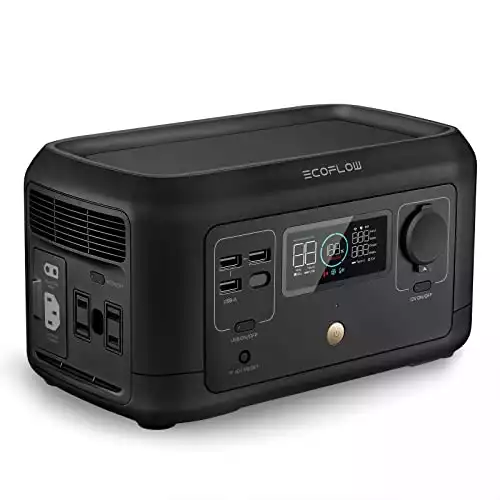
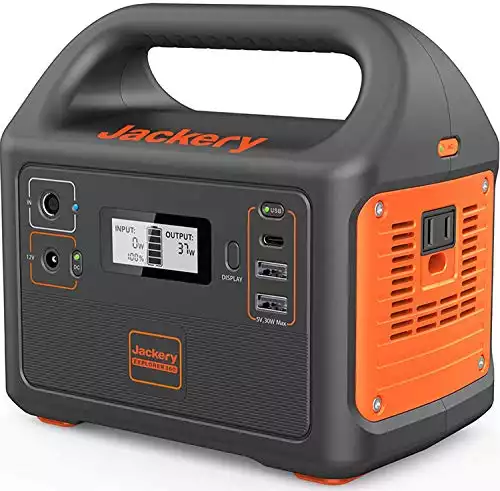
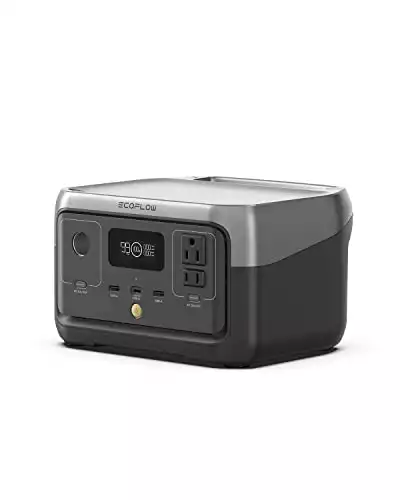
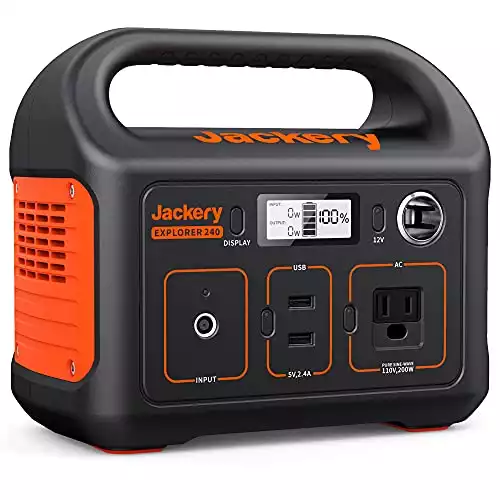
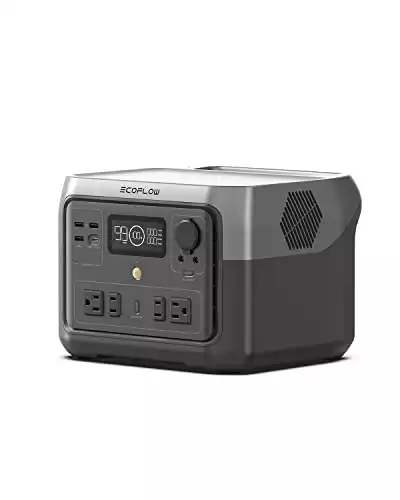
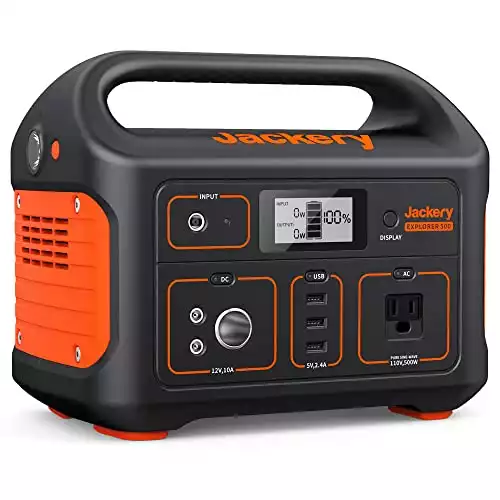
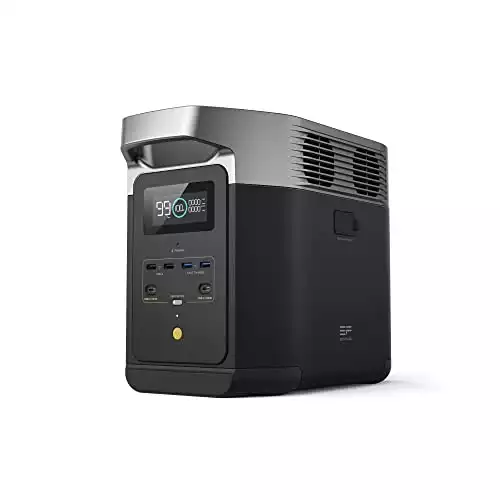
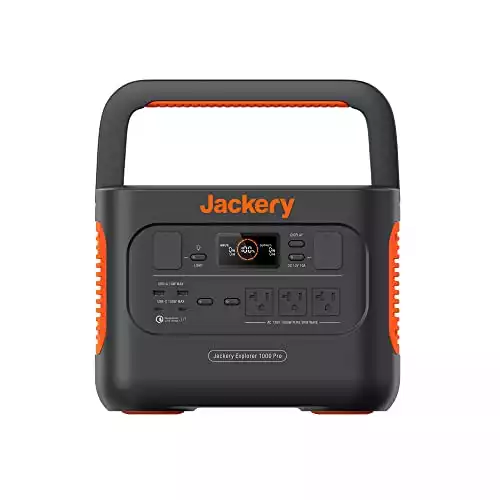
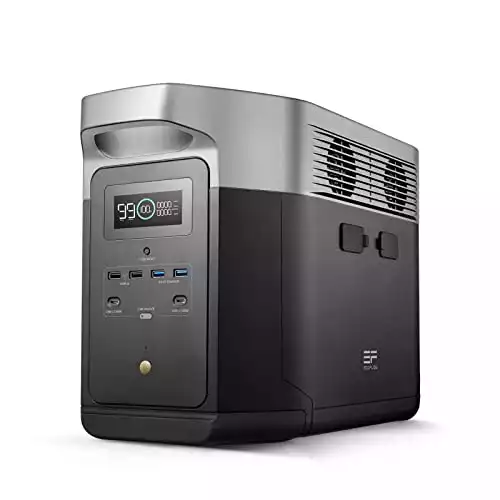
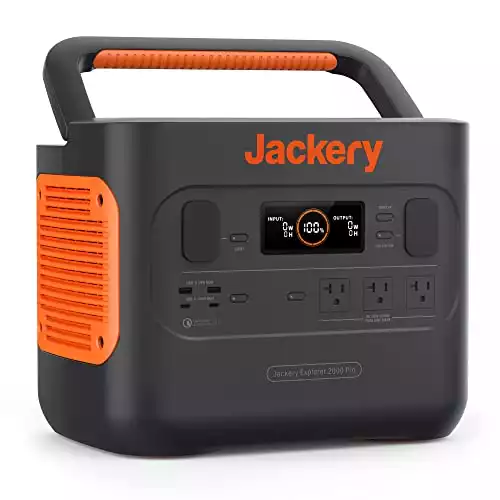


Thanks so much, Diane. I own both the Delta 1300 and the River 2 Max 500.
Your explanation clarified some information I haven’t understood previously. Now I can explain some factors to a friend to whom I’ve recommended getting the Delta 1300 with the better battery.
This was just great! I am printing to put in my files.
Really great, clear comparisons. Thanks!
What a valuable quick reference for someone ready to buy, as I am. Seems like every important feature comparison is right here. Thanks for the info!